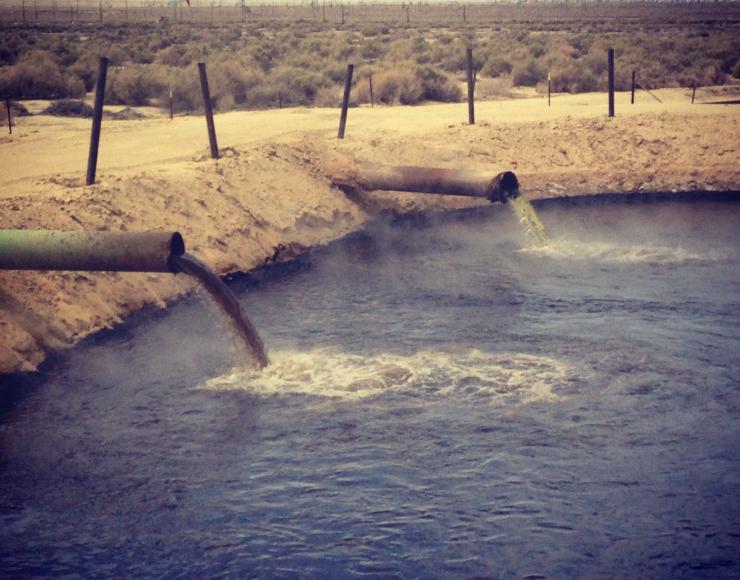As the third largest oil producing state in the country, California must manage a massive wastestream from the oil and gas sector. This waste threatens the state's water quality and environmental health. In 2013, the oil and gas industry produced 8 billion gallons of oil in California and 130 billion gallons of wastewater. This represents about 95% of all fluids recovered from California oil wells.

Oil and gas wastewater is comprised of flowback and produced water. Flowback is the fluid that returns to the surface after drilling, well completion, or well stimulation treatments, such as hydraulic fracturing or acidizing, are completed, but before oil and gas is recovered from the well. Produced water is primarily composed of the formation fluid (i.e. existing fluids that are present in the geologic formation) that comes to the surface during the production phase. Produced water is associated with all forms of oil and gas production, regardless of the use of well stimulation, fracking, or other treatments.
Both flowback and produced water often contain toxic chemicals from fracking, or other well treatments or injections, as well as naturally occurring contaminants, such as salts, heavy metals, toxic hydrocarbon-associated chemicals and sometimes radioactive materials. The amount of stimulation or fracking fluid that returns to the surface as flowback varies and is often unknown as injected fluids mix with formation fluids.
In California, the oil and gas industry disposes of its waste in four primary ways. Each with their own unique challenges and threats to water quality, health and the environment:
- Underground injection into Class II disposal wells;
- Reinjection for enhanced oil recovery (EOR) - water flooding or steam injection;
- Irrigation, as is done in a few oil fields on the East side of Kern County; or
- Disposal into unlined pits.
Historically, the State never required operators to report disposal methods, meaning that regulators nor the public had any idea of how much wastewater was sent to which disposal methods. Thanks to the passage of SB 1281 in 2014, we are starting to get a clearer picture.
SB 1281 reporting can be found here.
Learn more:
- Underground Injection disposal and enhanced oil recovery
- Unlined Pits
- From We All Live Downstream: Blog posts on oil and gas wastewater
